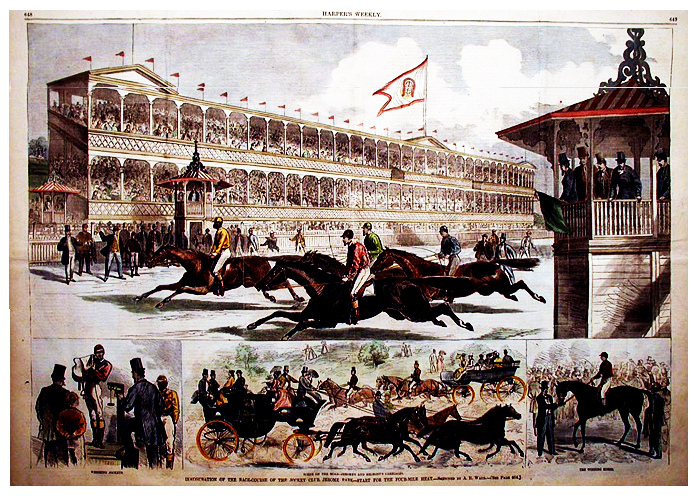The road to the Kentucky Derby begins today at Aqueduct. It is the 145th running of the Jerome Stakes. The race is the second oldest stake race in the United States for three year old thoroughbreds. The winner may go on to win the Derby in May. Although many New Yorkers will drink mint juleps for the Derby and wear hats to the Belmont Stakes, few realize the pivotal role of New Yorkers in horse racing. A great deal of that development goes through the city of New York which at one time had many more racecourses than it does today.
The Jerome Stakes are named for Leonard Jerome, who is the American grandfather of Sir Winston Churchill but is also one of the most influential men in promoting American horse racing.

Jerome, a native of upstate New York, made and lost fortunes on Wall Street both before and after the Civil War. Like many in New York society, Jerome emulated English society which was horse mad. Along with August Belmont and William Travers, Jerome sought to bring the “gentlemen” aspect to the pell mell racing world of New York. Along with the other two, he founded the American Jockey Club modeled on the English club. He bought an extensive property in the Bronx to build his ideal track:

The track and clubhouse were so lavish they immediately became “the course” to race your stable. The Stake race was first run in 1866 the year the track opened. In addition to the Jerome Stakes, the Belmont Stakes was first raced in the Bronx. The track was also where the first outdoor polo match was played in the United States. Jerome also introduced to New York society “four-in-hand” driving with elaborate carriages allowing for two Gilded Age essentials: display of wealth as well as looking English.

It will come as no surprise that when Jerome began construction on his mansion on fashionable Madison Square Park in 1859 the stables were completed first. Located on East 26th Street behind the house, the stables were lined with walnut and carpeted so that the hoofs of the horses would not be damaged. Every year, Jerome would give an opening ball for the race making both the ball and race “must events” for New York society.
The racetrack remainedwas opened until 1890 but nothing remains of it but its name. The land was turned into a reservoir for the city’s important water supply.
Images: NYPL